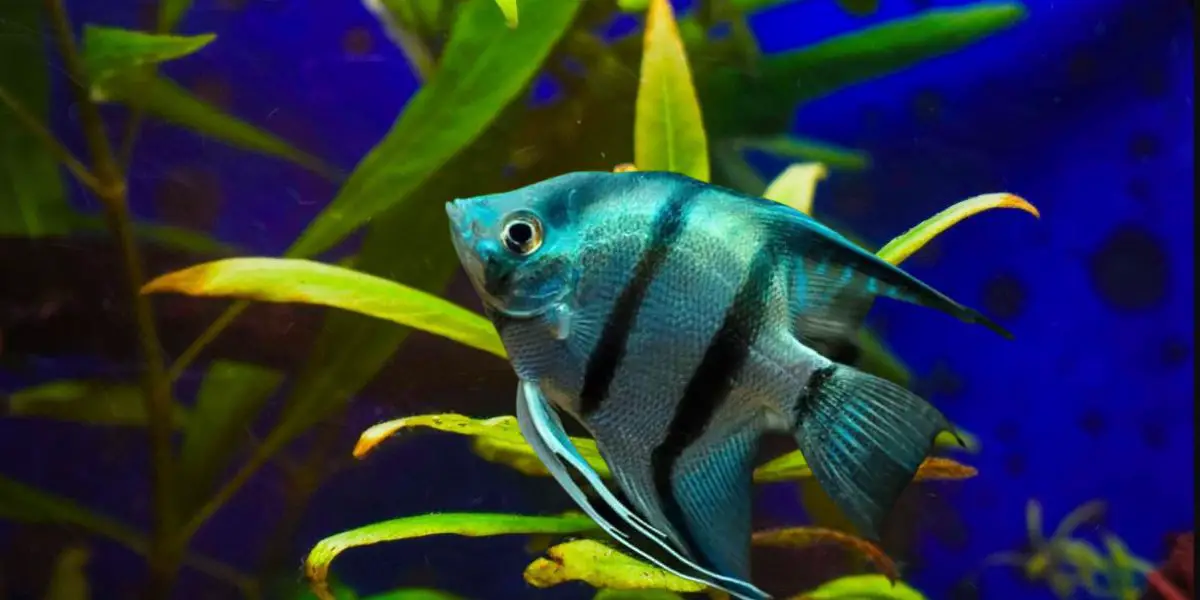Angelfish are popular aquarium fish due to their unique appearance and peaceful temperament. These South American natives are frequently kept in home aquariums. “How big do angelfish get?” is a typical question among fish enthusiasts. In this essay, we will go over all you need to know about fish size.
Overview of Angelfish
Angelfish are freshwater fish that belong to the Cichlid family. They are distinguished by their different shape, which resembles a triangle. Silver, black, and veil are just a few of the many colors and types of these fish. These fish are peaceful and can be kept in a community tank with other peaceful fish.
Size of Angelfish
The average size of these fish is around 6 inches. However, they can grow up to 12 inches in length. The size of fish depends on several factors, including genetics, diet, water quality, and tank size.
Angelfish grow relatively quickly, and you can expect them to reach their full size within 6 to 12 months.
Housing Requirements
Angelfish requires a minimum tank size of 20 gallons. However, a 30-gallon tank or larger is recommended for a single fish or a pair. These fish prefer soft, slightly acidic water with a pH between 6.0 and 7.5. The water temperature should be maintained between 76°F and 82°F.
These fish are peaceful, but they can become aggressive towards smaller fish. Therefore, it’s best to keep them with other peaceful fish that are of similar size.
Feeding Angelfish
Angelfish are omnivores who require a well-balanced diet of both plant and animal food. They should be fed twice a day with a combination of flakes, pellets, and frozen food. It’s important not to overfeed, as they can develop health problems if they become overweight.
Breeding Angelfish
Angelfish reach sexual maturity at around 6 to 8 months of age. During the breeding process, they form pairs and engage in courtship behavior. They may lay their eggs on flat surfaces such as leaves or the sides of the aquarium.
Parents of these fish are known to be attentive to their eggs and will defend them from predators. When the eggs hatch, the parents will care for the fry until they can swim and feed on their own.
Common Health Issues
Angelfish are generally hardy and disease-resistant, but they can still develop health issues if their environment is not properly maintained. Some of the most common health issues in these fish include fin rot, ich, and swim bladder disorder.
Signs of a healthy fish include clear eyes, active swimming behavior, and a healthy appetite. It’s important to monitor your fish for any signs of illness and seek treatment promptly if necessary.
Conclusion
In conclusion, angelfish are a fascinating and beautiful species of freshwater fish. They are relatively easy to care for and make excellent additions to home aquariums. Understanding the size of angelfish is essential for providing them with proper care and maintenance. By following the guidelines outlined in this article, you can ensure that your fish thrive in their environment.
FAQs
Can angelfish live in a community tank?
Yes, they can live in a community tank with other peaceful fish of similar size.
Do angelfish need a heater?
Yes, they require a heater to maintain a stable water temperature.
How often should I feed my fish?
This fish should be fed twice a day with a combination of flakes, pellets, and frozen food.
Can angelfish change color?
Yes, they can change color depending on their mood and environment.
Can these fish live in a small tank?
No, these fish require a minimum tank size of 20 gallons.

